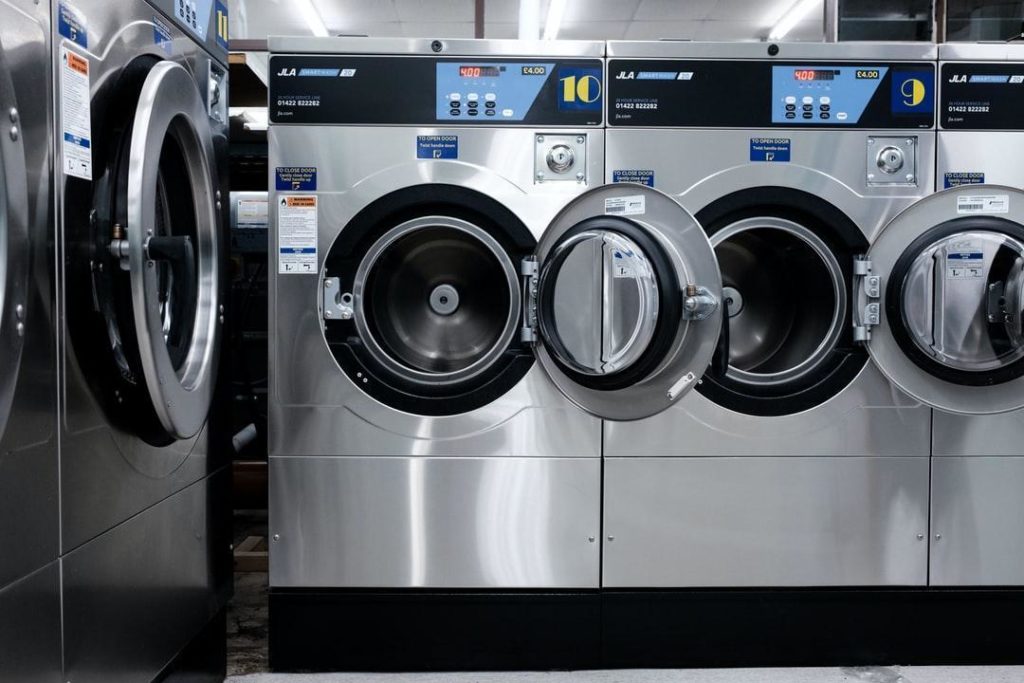If you’re looking for a new washing machine, you may be wondering if a front-load or top-load washer is best for you.
Whether you load and unload your clothes from the front or top is not the only difference between these two types of washing machines. Each offer their own benefits. Learn more about the key differences, along with answers to typical questions that will help you determine which type of washer you should purchase.
Front-Load vs. Top-Load Washers: What Are They?
Front-Load Washers
Besides requiring you to load and unload clothes from the front, front-load washers typically use less water and require more time to finish a wash cycle. They also rub clothes against each other to clean them instead of relying on an agitator or impeller to remove stains.
Top-Load Washers
Top-load washers take in clothes from the top and generally use more water than front-load washers. There are two types of top-load washers: agitators and impellers.
Agitator washers use agitators (tall vertical columns in the center of the washer) to clean clothes. Agitators twist back and forth to break apart stains and eliminate dirt. In contrast, impellers are low-profile discs or cones that rotate to rub clothes against each other to clean them.
What Are the Differences Between Front- and Top-Load Models?
Whether a front-load or top-load washer is a better fit for you depends on your personal preferences. They both have their advantages and disadvantages.
Which Type of Washer Is Most Efficient?
Top-load washing machines usually wash clothes more efficiently because they soak them in water for the entire wash cycle.
However, not all top-loaders are the same. Top-load washing machines with agitators wash very quickly, because they only rely on a single structure (the agitator) to create friction and wash clothes.
Meanwhile, those with impellers tend to be slower (though a bit faster than front-load models). This is because impellers clean clothes by spinning them around, relying on the clothes to rub against each other to remove dirt.
Which Has a Shorter Cycle Time?
Top-loading washing machines have shorter cycle times. Those with agitators have an average cycle of 30 minutes, while those with impellers take about 50 minutes to finish a cycle.
In comparison, front-loaders take an average of 60 minutes for a normal wash cycle. There are some washers with shorter cycles, but those tend to be quite expensive.
Which Uses Fewer Gallons of Water Per Load?
Front-load washers use fewer gallons of water per load compared to most top-loading washing machines.
Unlike top-loading washing machines, front-loaders don’t need as much water to give your clothes a good clean. Instead, they use tumbling motions to:
- Rub clothes against each other
- Mix the detergent with the clothes
- Rub clothes against the washtub and drum
Front-loaders also spin clothes at the end of the cycle, which means clothes are less wet than if they were washed in a top-loader. This means less time in the dryer.
Which Uses the Least Floor Space Relative to Cubic Feet of Space for Loads of Laundry?
For many, space is an important consideration when determining what kind of washer to buy. This is especially true if you have limited space, live in an apartment, or have a unique setup.
If you have limited space, consider getting a front-load washer. A front-load washer gives you more floor space since you can:
- Stack it on top of your dryer or vice versa
- Place the washer and dryer side by side
Top-loaders can only be placed side by side since you have to use the top to load and unload clothes.
What Additional Features Do Each Offer?
Many modern washers have advanced features like Wi-Fi connectivity, interior lights, sensor washing, second-chance doors, and more. Shop around until you find the most appealing features. Here are some important points to consider:
Front-Loading Washers:
- Aesthetic: Many models come with fashionable glass doors and a decorative trim, while top-loaders can look a bit dated.
- Harder to use for some people: If you are tall or have joint pain, you might find that front-loaders can be difficult to use. Consider stacking your front-loader on top of your dryer for easy access.
Top-Loading Washers:
- Budget-friendly: Top-loaders tend to cost less. They use established technology and have been around longer.
- Convenient features: Some models offer the ability to add clothes in the middle of a cycle or right after starting a cycle. They are also better at distributing fabric softener and collecting lint.
- Require less maintenance: Unlike front-loaders, top-loaders don’t typically have mold problems. This is because they use gravity to pull water down and don’t have gaskets or seals where water can collect. The lid also provides free airflow.
Which Washer Model Is Best for You?
To determine which washer model is best for your home, you need to pinpoint what’s important to you. Ask yourself the following questions:
- How much time do I have for laundry and other housekeeping tasks?
- What features are a must-have for me? Which features are nice but not necessary?
- What’s my budget?
While front-loaders tend to be more fashionable and save both space and water, they come with higher price tags and may be harder for some people to use. They are also more likely to attract mold, unlike top-loaders.
Meanwhile, top-loading washing machines are generally more affordable and have shorter cycle times, making them a better choice if you’re looking to save both money and time. These are all important things to consider when picking out your washer of choice.
